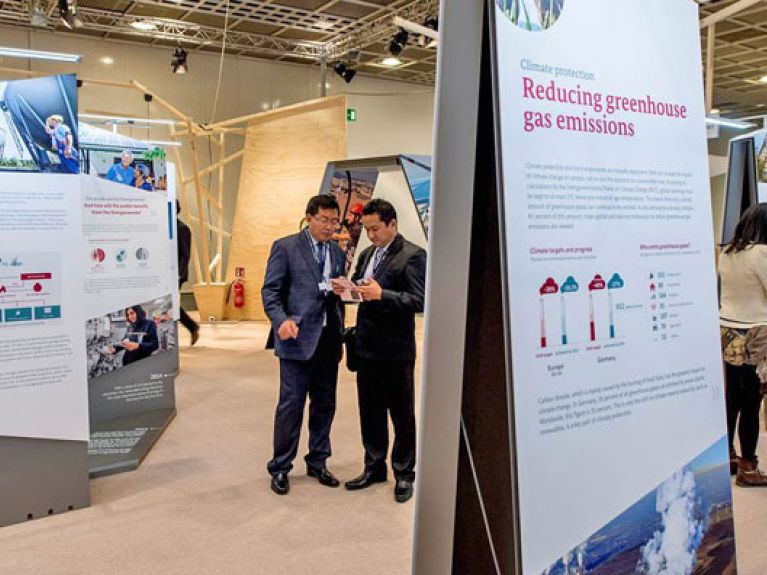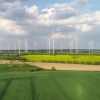Multimedia show on the Energy Transition
An exhibition traces the long path to the Energy Transition and clearly illustrates how it is changing everyday life in Germany.

The rush of the wind, accompanied by a quiet “flap-flap-flap”: The journey tracing the story of the Energy Transition in Germany begins with a step into the “sound shower”. Sounds and a waft of air give an idea of how it feels to stand at the top of a wind turbine. The energy transition for the senses.
Now only very few people will ever climb to the top of such a structure, but the renewable energy generated by wind turbines is already shaping the lives of many people in Germany. What the energy transition means for citizens and how it is changing daily life – these are issues addressed in the multimedia exhibition “Germany’s Energy Transition” by the German Federal Foreign Office. Federal Foreign Minister Frank-Walter Steinmeier opened the show in Beijing in early April, and it will subsequently travel to various stops around the world. It is now on show in Frankfurt/Main until 4 May. More than 3,500 financial experts, politicians and representatives of non-governmental organisations will be taking part in the Asian Development Bank (ADB) conference there, while also discussing innovative solutions for better living conditions worldwide. Further stations of the exhibition are Cape Town, San Francisco and Mexico City.
The timeline begins back in the early 1970s
The international profile of the Energy Transition correspondingly plays an important role in the exhibition. Visitors learn that many countries worldwide are seeking to expand renewable energy sources and have already made considerable progress in doing so. 147 states are members of the International Renewable Energy Agency (IRENA), in the establishment of which Germany played a key role.
At the same time the exhibition leaves no doubt that switching over the energy system to renewables is an ambitious political and technological project – and didn’t happen overnight in Germany either. The timeline that guides visitors through the exhibition begins back in 1971: with the first government environmental programme. The show also addresses and clusters frequently voiced concerns about the Energy Transition. Is the Energy Transition not too expensive? Will it cost jobs? Can it also succeed in countries whose economies are not as strong?
Should they wish, at the end of the exhibition visitors can test what they have learnt with a quiz, give feedback on the show via touchscreen or take a glance at the future, to the year 2050. A film shows what the everyday life of a family of three might be like: The son’s school bus is powered by hydrogen and there are charging stations for the parents’ electric car both in front of the family home and at the workplace. When they all arrive home in the evening the washing machine has already washed the clothes from the previous day – automatically switching on when plenty of solar energy is available. Future scenarios that are not actually that far off.
Further exhibition stations:
20 May – 9 June 2016: Cape Town, African Energy Transition Conference
from 20 June 2016: Mexico City, Germany Year in Mexico

